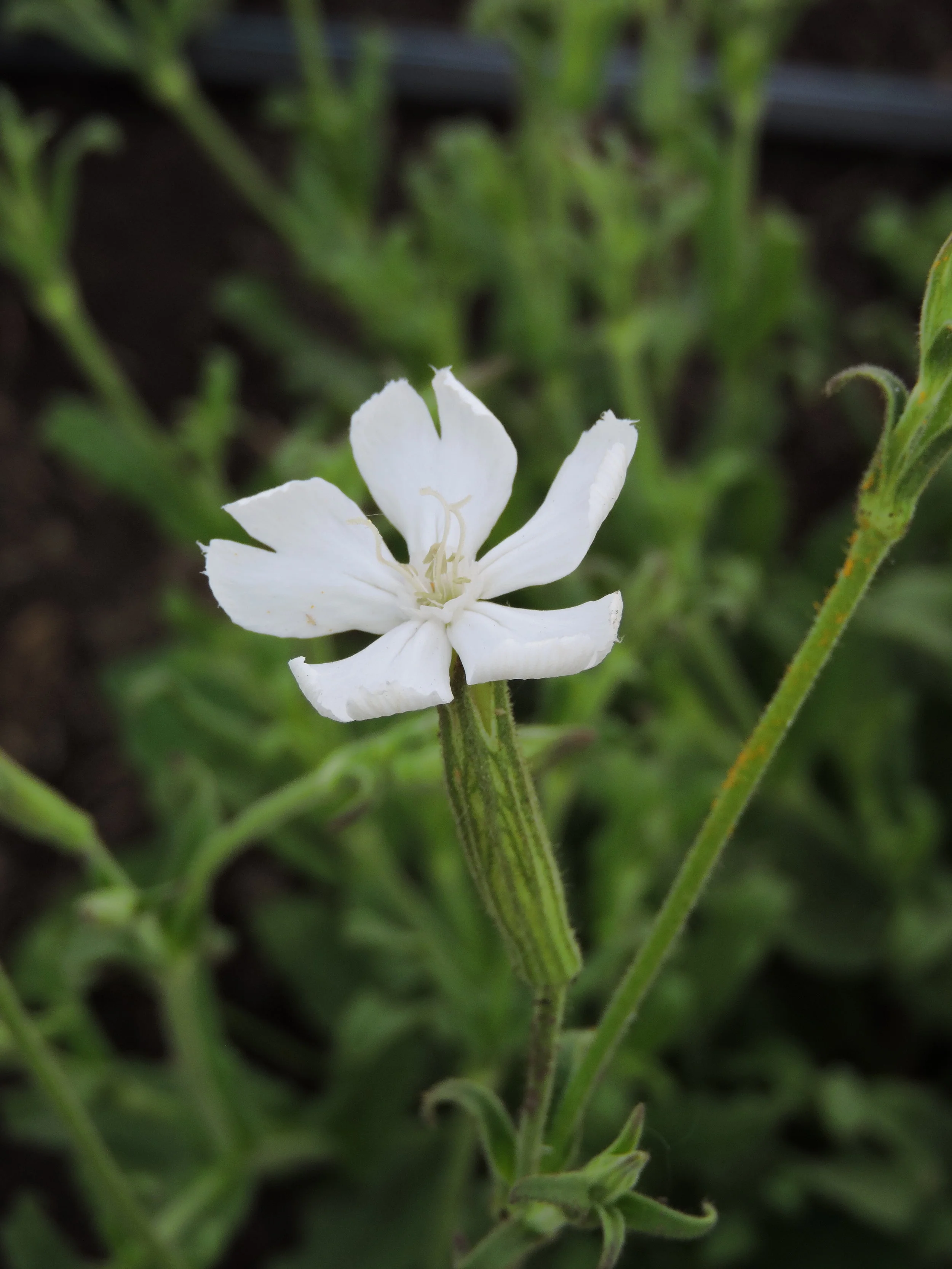Xhosa Dreamroot
Xhosa Dreamroot
Silene capensis
A heat tolerant and somewhat drought tolerant wildflower native to the eastern cape of South Africa. It forms a rosette of narrow leaves and can bloom with its white flowers up to 2 feet tall. It seems to be hardy to at least a zone 7 (10 F) in an unprotected pot, but I think it will overwinter in zone 6 in the ground with some mulching (testing winter 2017-18). It can also be grown as an annual. Occasional trimming of the tops during active growth can stimulate root development. Kelp tea or other mild micronutrient and mineral rich fertilizers with some potassium content are good for supporting root development.
Dreamroot is a type of catchfly (silene), and like many of them it has sticky stems and sepals near the flowers that can catch small insects, this is thought to protect flower parts from being eaten by ants. Inevitably honeybees and other innocent bystanders get caught in its defenses. Perhaps it doubles as a way to collect nutrients that will feed the roots when fallen stems, leaves and captured insects decompose around the plant.
A traditional oneirogen (dream-stimulating) and emetic (purging) herb of the Xhosa people and others in the Eastern Cape of South Africa, it is used to enhance lucidity and prophetic dreams. Xhosa is a click language and the ‘xh’ is pronounced by lightly pressing the tip of the tongue to the roof of your mouth near your front teeth, and making a slight suction to release it while you are making a vowel sound. Here is an interesting bit of trivia: it is thought by some, that the vibrations of click languages can affect/stimulate activity of the brain’s pineal gland, found near the sinuses. The pineal gland actually has a calcite/hydroxyapatite crystal that can be affected by the two forces of piezoelectricity (direct; electrical charge produced through compression of certain minerals including calcite, quartz and crystalline matrices in bone and converse; compression of crystals by electromagnetic frequencies). There are some interesting scientific articles on the topic of "piezoelectricity and the pineal gland".
Traditional preparation: The Xhosa prepare S. capensis by powdering the roots, which they call undlela ziimhlophe (which translates to ‘white paths’ or ‘white ways’), and drinking the powder with water on an empty stomach.
Germination: Start dreamroot seeds much like tomatoes. Keep the seeds warm, 70-75 degrees F, moist and pressed lightly into a good quality potting soil or compost. Be patient as they can take some time to sprout.
Packet: 30 Seeds

